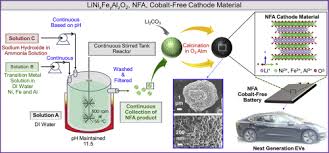
Breaking News
 Shadowy Forces Behind JD Vance's Rise and Grooming as MAGA Successor
Shadowy Forces Behind JD Vance's Rise and Grooming as MAGA Successor
 Who Is Paying Alberta, Canada, Premier Danielle Smith if Not Big Pharma?
Who Is Paying Alberta, Canada, Premier Danielle Smith if Not Big Pharma?
 RFK Jr. kills off $122M in grants to LGBT and diversity causes in sweeping action
RFK Jr. kills off $122M in grants to LGBT and diversity causes in sweeping action
 Trump Unveils Another $825M Arms Sale To Ukraine, While Talking Peace
Trump Unveils Another $825M Arms Sale To Ukraine, While Talking Peace
Top Tech News
 NVIDIA just announced the T5000 robot brain microprocessor that can power TERMINATORS
NVIDIA just announced the T5000 robot brain microprocessor that can power TERMINATORS
 Two-story family home was 3D-printed in just 18 hours
Two-story family home was 3D-printed in just 18 hours
 This Hypersonic Space Plane Will Fly From London to N.Y.C. in an Hour
This Hypersonic Space Plane Will Fly From London to N.Y.C. in an Hour
 Magnetic Fields Reshape the Movement of Sound Waves in a Stunning Discovery
Magnetic Fields Reshape the Movement of Sound Waves in a Stunning Discovery
 There are studies that have shown that there is a peptide that can completely regenerate nerves
There are studies that have shown that there is a peptide that can completely regenerate nerves
 Swedish startup unveils Starlink alternative - that Musk can't switch off
Swedish startup unveils Starlink alternative - that Musk can't switch off
 Video Games At 30,000 Feet? Starlink's Airline Rollout Is Making It Reality
Video Games At 30,000 Feet? Starlink's Airline Rollout Is Making It Reality
 Automating Pregnancy through Robot Surrogates
Automating Pregnancy through Robot Surrogates
 Grok 4 Vending Machine Win, Stealth Grok 4 coding Leading to Possible AGI with Grok 5
Grok 4 Vending Machine Win, Stealth Grok 4 coding Leading to Possible AGI with Grok 5
Oak Ridge Research Next Generation Cathode Free Lithium Ion Batteries

The new class called NFA, which stands for nickel-, iron- and aluminum-based cathode, is a derivative of lithium nickelate and can be used to make the positive electrode of a lithium-ion battery. These novel cathodes are designed to be fast charging, energy dense, cost effective, and longer-lasting.
With the rise in the production of portable electronics and electric vehicles throughout the world, lithium-ion batteries are in high demand. According to Ilias Belharouak, ORNL's scientist leading the NFA research and development, more than 100 million electric vehicles are anticipated to be on the road by 2030. Cobalt is a metal currently needed for the cathode which makes up the significant portion of a lithium-ion battery's cost.

 HERE COMES THE MOTHERSHIP
HERE COMES THE MOTHERSHIP

